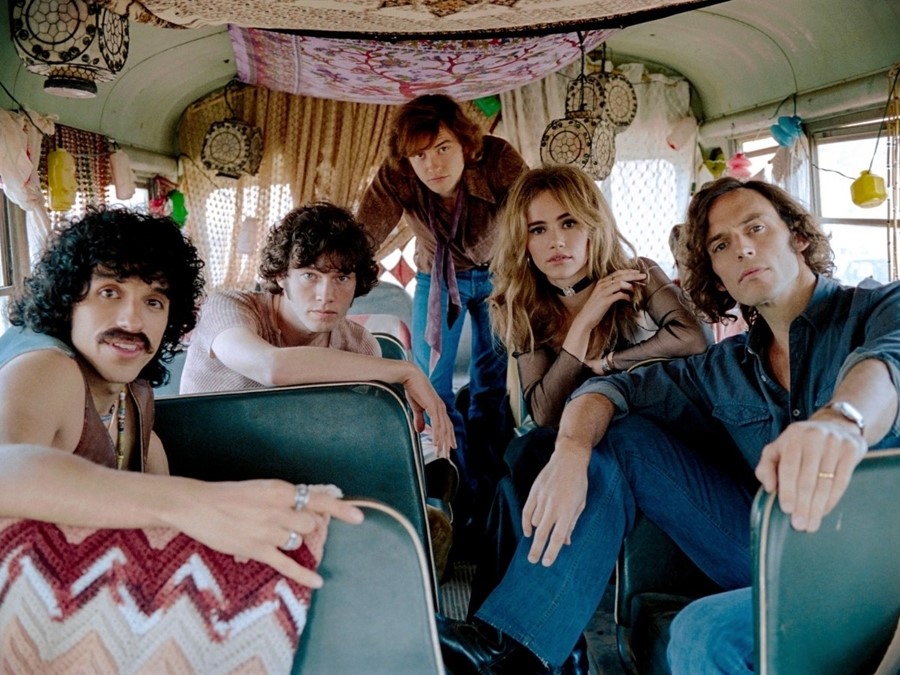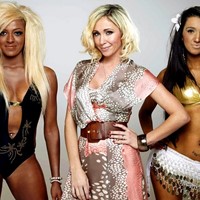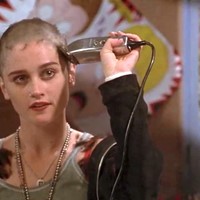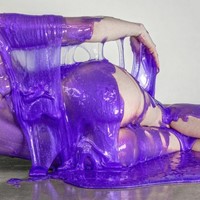We investigate what exactly makes an actor look like they have ‘seen a smartphone’, and why some faces just don’t seem believable in period films
Dakota Johnson in the film adaptation of Jane Austen’s Persuasion, Timothée Chalamet as King Henry V, the entire cast of Daisy Jones & the Six – what do they have in common? All have been deemed by the internet as looking too modern to believably act in period pieces. More specifically, all have been accused of having faces that look like they know what some form of modern technology is, from smartphones to the internet to air fryers. Or, as one person said about Camila Morrone, “she looks like she knows what Venmo is”.
But what does it mean to have a face that looks like it has seen the internet? Are some faces really more modern looking than others (people have said Bella Ramsey, for example, has a face fit for historical films) and what features, if any, contribute to the look?
To begin the investigation, it’s important to look at the overall evolution of human faces. Michael Sheehan, a behavioural ecologist and associate professor at Cornell University, says that because humans are highly sociable animals, our facial traits have diversified over time in order for us to easily recognise each other’s faces. Given that our facial features have slowly evolved to become more unique, is the same evolutionary process responsible for making faces today look modern? Sheehan isn’t so sure.
“The perceived differences in appearance of people between the mid-20th century and now is almost certainly the result of stylistic, grooming or diet changes rather than facial evolution,” he tells Dazed. Although humans in the past have evolved to have diverse facial features, it’s not likely that our faces have changed a significant amount in a matter of 50 years. Disregarding all of the outside factors that allow us to be perceived as modern, our natural faces aren’t actually that different compared to those of previous decades.
“Results from our previous work have shown that the genetic variation that gives rise to human facial diversity is under balancing selection, which acts to maintain variation over time,” Sheehan says. Sheehan’s work has found that the balancing selection stabilizes our facial diversity, which means that even though our faces differ from each other greatly, they still maintain an average that remains the same over time.
So, if there’s a difference in how faces look now compared to a face of a previous decade it is more likely the result of cultural choices, current beauty standards and improved healthcare. For example, dentistry: various people have attributed the “face that has seen an iPhone” phenomenon to perfect pearly whites and the popularity of veneers. “My personal theory for why it’s impossible for Hollywood to make a plausible period piece for TV and film in 2023 is cosmetic dentistry,” tweeted journalist Michelle Cyca. “These fake teeth simply did not exist in the 70s.”
@anniesright What are y’all’s thoughts on #veneers ♬ original sound - annie
Invented in 1928, veneers were actually first developed in Hollywood as a way to change an actor’s appearance for a film shoot, says cosmetic dentist and founder of Bespoke Smile, Dr Sam Jethwa. “It wasn’t until the early 80s, however, that veneers started to gain popularity and became more affordable rather than something that was only attainable by the rich and famous.” So while veneers did exist in the 70s, it’s unlikely that every band member of Daisy Jones & the Six would have had perfect smiles. In 2023 however, veneers are a popular procedure, particularly in Hollywood.
A large part of having a modern face, then, is following modern beauty trends, whether that’s veneers and eyebrow grooming, or cosmetic surgery which has seen a huge rise since the 70s – and since Jane Austen was writing about Anne Elliot – and which has created a more homogenised beauty look among actors. “Everyone looks the same now because of cosmetic surgery [and procedures like] filler and Botox,” says Laura Jane Atelier, who researches beauty standards throughout history for her video essays. In the 70s, she says, actors had more facial expressions and a unique look. “If you look at Farrah Fawcett, she has thin lips and a high nose bridge as well as an angular jaw. She had a unique look and features that wouldn’t be popular by today’s standards.”

Whether someone has a modern face or not is a big discussion point on social media and amongst viewers, but is it something that the people making the films ever think about? “As a casting director our job is to support the director’s vision for the world they’re creating, so it’s less about modern vs period and more about trying to understand how the director imagines the characters,” Emily Brockmann of Lucy Bevan Casting tells Dazed. “We’re always looking for interesting faces, but at the same time we’re also looking for actors who can disappear into a role and blend well with the other cast. It’s a fine balance.”
For Brockmann, faces with a lot of cosmetic procedures often feel out of place in stories that take place in the past and can contribute to a face feeling ‘modern’. A recent example of successful casting, she believes, is Women Talking which, although set in 2010, was created to feel timeless and the story transcends specific time periods. “The actors in the film had interesting and contrasting faces, but they all felt beautifully real and worked so well together as an ensemble. I loved John Buchan and Jason Knight’s work on the project, the casting was superb,” Brockmann says.
From perfect white teeth to lip filler and a smooth forehead, it’s true that there are certain cosmetic ‘improvements’ that can contribute to making a face feel more modern. But that doesn’t quite explain exactly what makes actors like Timmy and Dakota look like they have experience with smartphones and payment apps. Could there be a deeper, more elusive quality about someone’s face that makes it look modern? Or does it all just come down to the fact that, in 2023, everyone knows what an iPhone is?
Join Dazed Club and be part of our world! You get exclusive access to events, parties, festivals and our editors, as well as a free subscription to Dazed for a year. Join for £5/month today.




